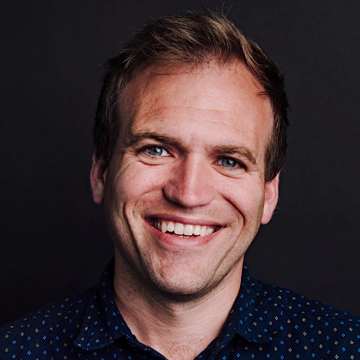When Ben Gordon headed off to Israel following college, he thought he was destined to become a rabbi. He enrolled in the Conservative movement’s yeshiva and studied for two years, but after he answered an ad to be a research assistant to a well-known Hebrew University archaeologist — Eilat Mazar — his life changed course.
Now, more than a decade later, Gordon is still keenly interested in Judaism, but instead of engaging from the pulpit, he is using his talents to dig into the history of his people a bit more literally.
Gordon, the Perlow lecturer in Classical Judaism and the Ancient Near East in the department of Religious Studies within the Kenneth P. Dietrich School of Arts and Sciences at the University of Pittsburgh, will be heading to Israel’s Galilee region this summer to commence a multiyear project excavating Tel Shimron, an archaeological site near the town of Sepphoris. Gordon will be part of the core research team, which includes Mario Martin of Tel Aviv University and Daniel Master of Wheaton University as co-directors of the project.
Gordon, a Virginia native, is no stranger to the historical treasures of Sepphoris, having done field work there as well as examined the findings of its excavation through affiliations with Hebrew University and Duke University.
Sepphoris, he explained, became a center of Jewish life after the destruction of the Second Temple. Following the Jews’ expulsion from Jerusalem, many migrated north and settled there, where Jewish intellectual life flourished.
“Judah HaNasi lived there when he edited the Mishnah,” Gordon noted.
Duke University began excavating a residential area of Sepphoris in the late 1980s, Gordon said, and found concrete evidence of Jewish life, including private ritual baths known as mikvahs in the homes, as well as dining vessels carved from stone that were referenced in the Talmud as being insusceptible to ritual impurity.
“In this specific period of time, these things are clear indicators of a Jewish presence,” Gordon said. “That kind of thing is like a gift for archeologists because sometimes it is hard to know who the people were that were living in the houses you’re excavating.”
Gordon has been working on publishing the findings of the Duke excavations, he said, noting that those artifacts “give us a snapshot of Jewish life in the Galilee in the Roman period, from the first century before the Common Era, through the fourth and fifth centuries of the Common Era.”
Sepphoris, he explained, became increasingly diverse as the Roman period progressed. It began as a “thoroughly Jewish town in the Galilee and became the capital of the Galilee during the reign of Herod and his son Antipas, and then with time it became a center of Roman pagan culture, and in the Byzantine era, sort of Christian culture.”
It is Gordon’s work on the Sepphoris excavations, and his expertise in the Galilee and the Roman period, that led to his invitation to join the Shimron project, he said.
Tel Shimron is unusual in Israel because it is one of the last unexcavated mounds in the Jewish state.
“Shimron is known from ancient sources to have been a major city in the Bronze Age and in the Iron Age,” he said. “In biblical legend it’s said to have been destroyed by Joshua and his armies when the Israelites conquered the land of Canaan. What my colleagues will be focusing on is the earlier remains, the Bronze Age and the Iron Age.”
Shimron is mentioned in several sources in the Jerusalem Talmud as a major town with a synagogue, Gordon said, adding that the team will be looking for that building in its excavation work.
There are reasons to suppose that there were “significant economic resources” in Shimron, Gordon continued, noting its location on the edge of the Jezreel Valley, which is the most fertile plane in Israel.
“Some of the villagers of the town could have been major landowners,” he said.
Among the things the team will be looking for are evidence of Shimron’s role in the East-West trade which passed through the Jezreel and Beth-Netopha valleys in various periods, the size and extent of the village, signs of social stratification, and the occupations of its inhabitants.
The project is affiliated with the Museum of the Bible, which is slated to open in Washington in November 2017, two blocks from the National Mall. The eight-story, 430,000-square-foot building is the project of Steve Green, president of Hobby Lobby.
“To me it is a promising sign that the Museum of the Bible is giving so much support to archaeology as a way to shed light on Jewish and Christian scripture,” Gordon said. “They are not turning their backs on academic research into the ancient world, but embracing it.”
Gordon will be a valuable member of the team, said Master, co-director of Tel Shimron Excavations.
“Tel Shimron is right in the center of the world of first century Judaism and the Rabbinic period which followed,” Master said. “The site sits just between Beth Shearim and Sepphoris. We hope to witness the ways in which the coming of Rome to the region of Galilee influenced the religious world of the New Testament and the Mishna, two texts which still shape so much of our world today. Ben Gordon’s work on Judaism, Hellenism and Rome is a perfect springboard for the new discoveries we will uncover.”
“Our hope is the discoveries at Tel Shimron will contribute to a deeper understanding of the various people groups and cultures that resided in the region and thus these discoveries will add to our understanding of the Bible,” said Cary Summers, president of Museum of the Bible.
Gordon, whose Pitt courses include “Israel and the Biblical Age,” which examines textural and archaeological remains side by side, is working to make available study abroad opportunities for Pitt students to participate in the Tel Shimron project in the summer of 2018.
Read more at Digging into Jewish history.
